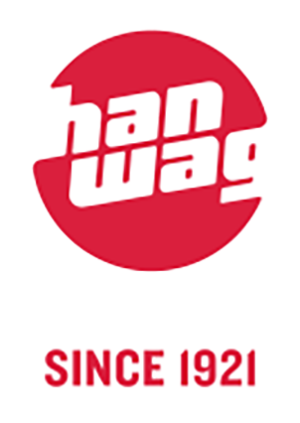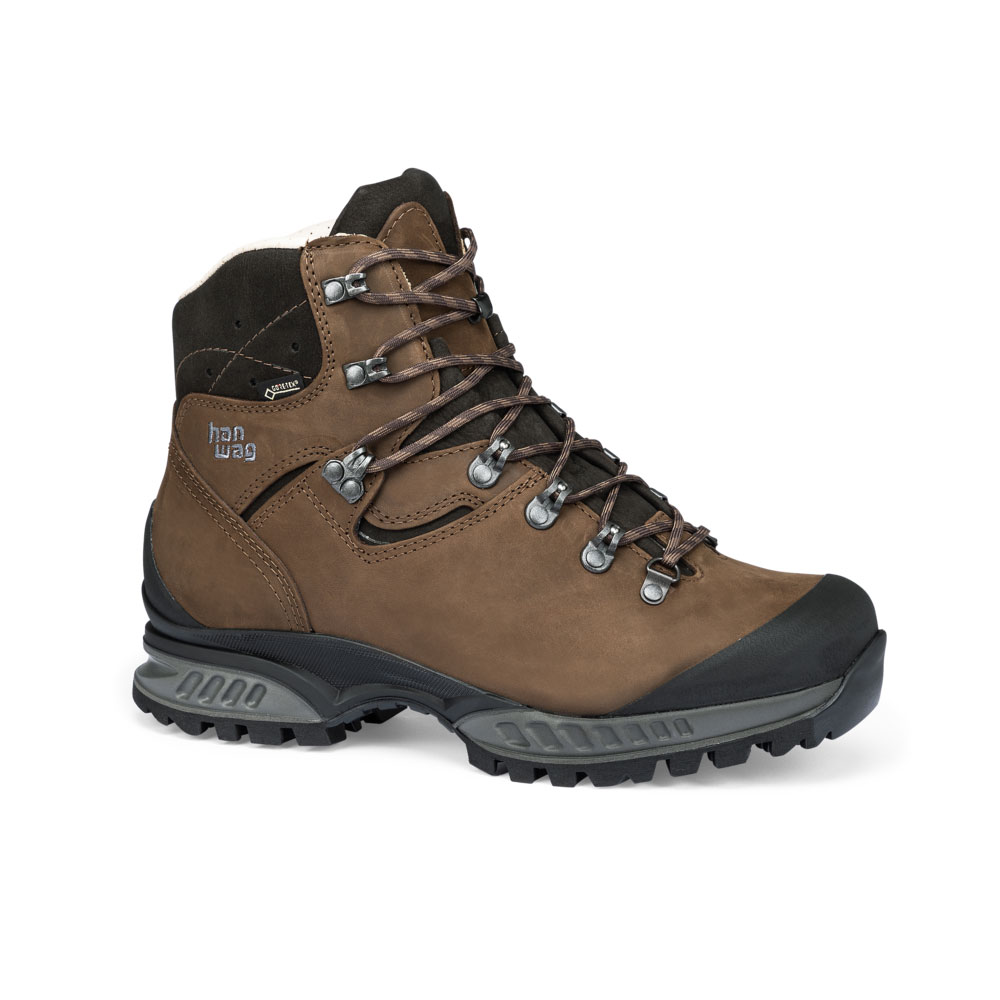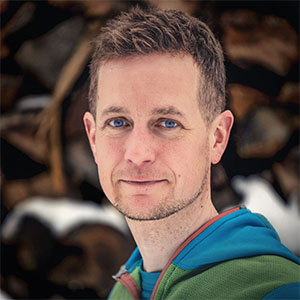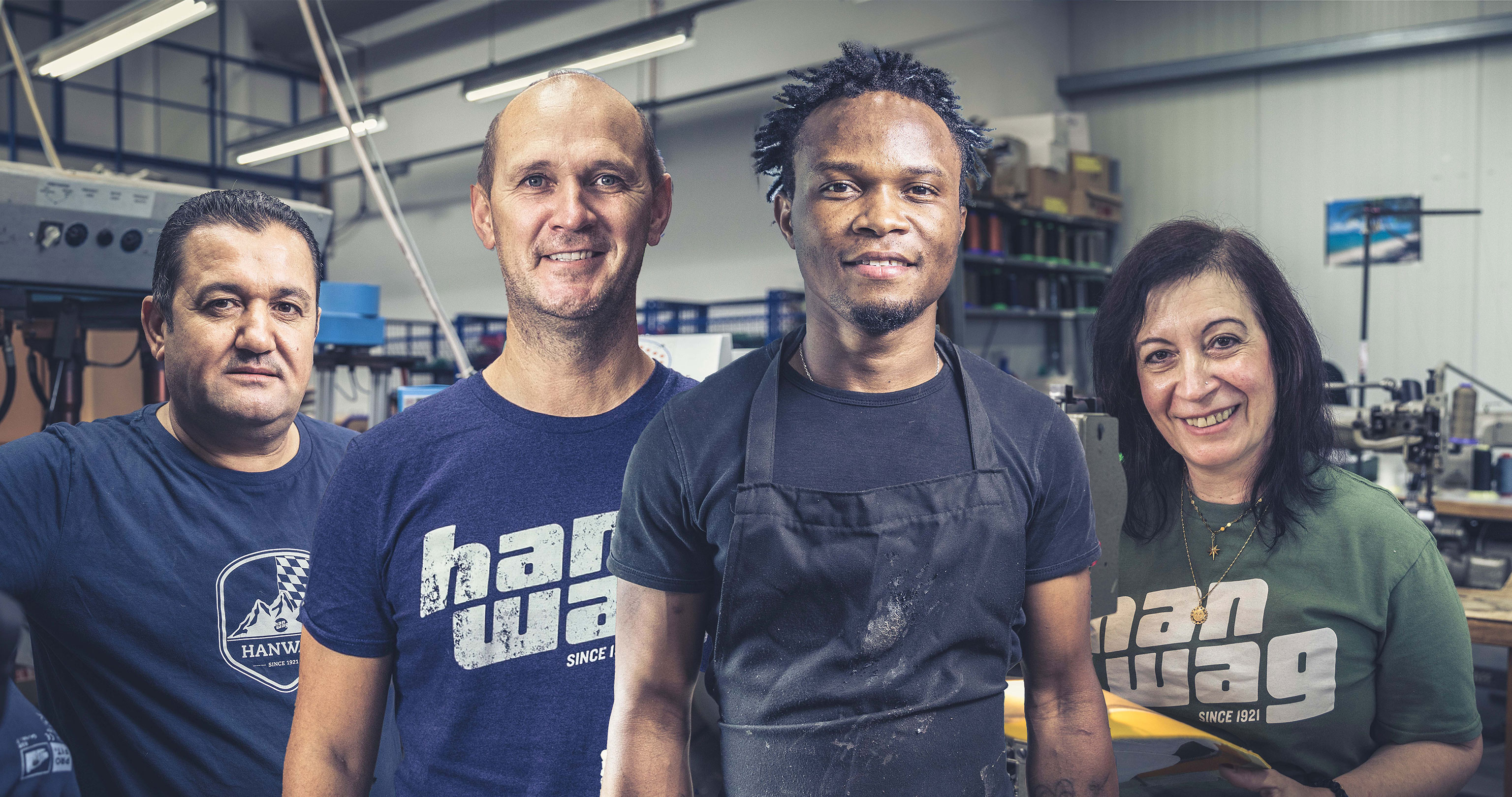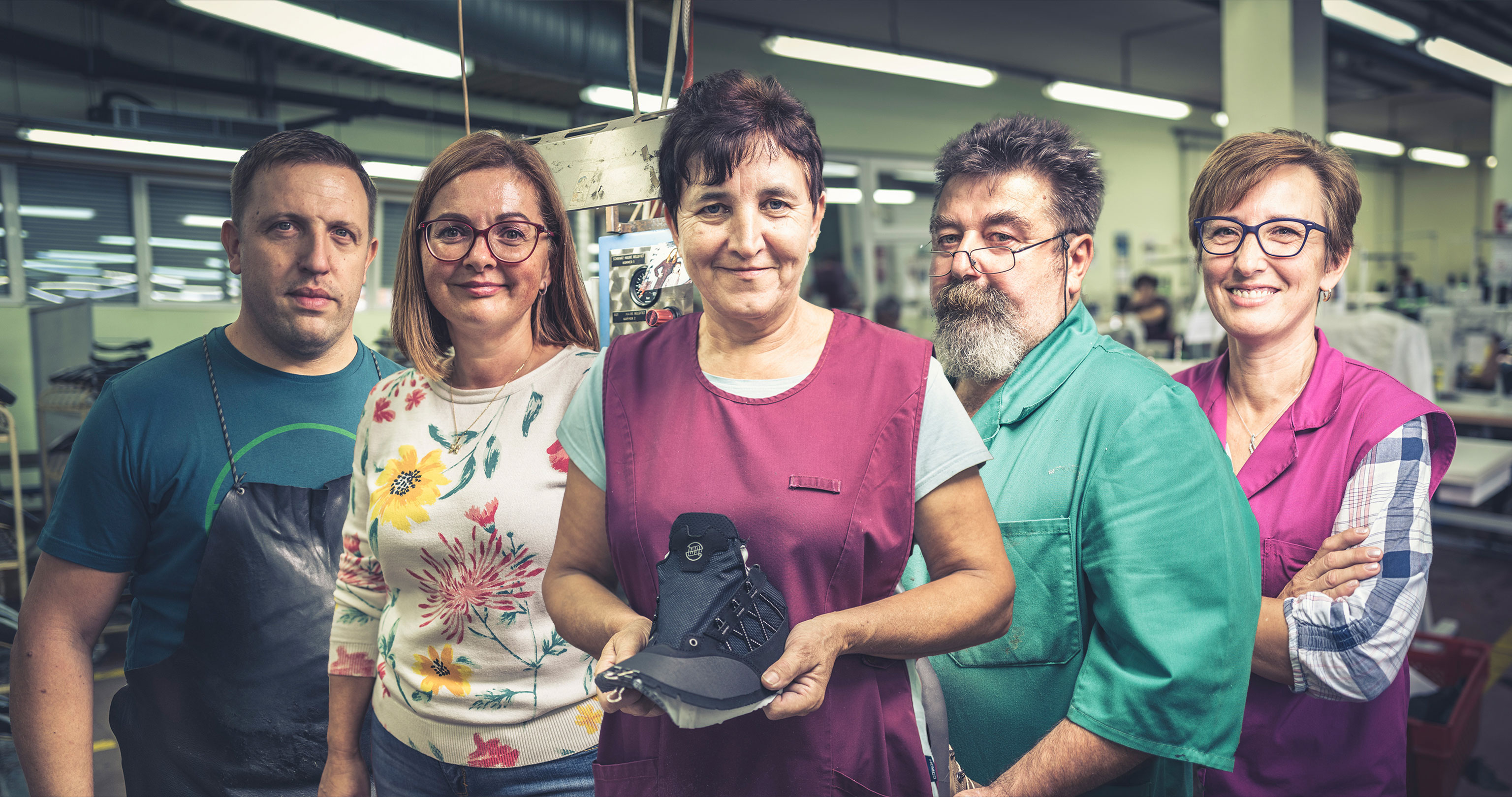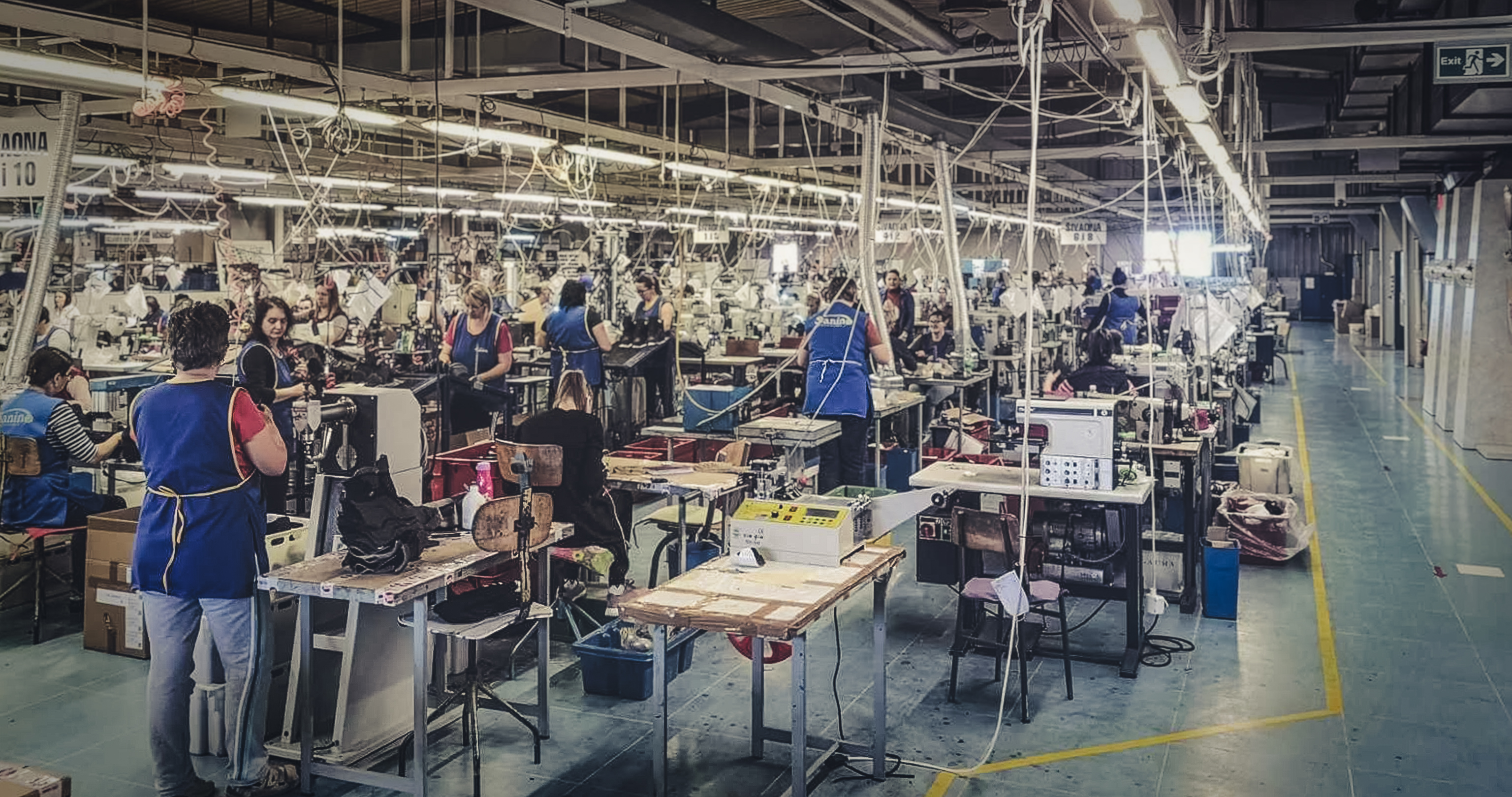Updated on
‘Made in Europe’ road trip – check out the stops:
–> Visiting the headquarters in Bavaria
–> Our biggest footwear factory, Croatia
–> A day in the life of the HANWAG factory in Hungary
–> Traditional footwear craftsmanship in Swabia
–> A footwear dynasty in Bosnia
HANWAG manufactures exclusively in Europe. But what does that actually mean? And more specifically: who are the people whose skills and craftsmanship translate into our high-quality footwear?
In this series, we’re taking you on a road trip through five long-standing HANWAG production facilities in four different European countries. You’ll find out a bit about making shoes. And you’ll meet four people who make those shoes too. Stop number 3 takes us to our factory in Hungary.

Welcome to Hajdúböszörmény
- Csilla is passionate about quality
- Andrea: “It feels like one big family here.”
- Robert creates the perfect fit
- Timea: “I can develop my skills here”
Hajdúböszörmény – to be honest, we still aren’t entirely sure how to pronounce it properly. But we do know that this town of 30,000 people is in the far east of Hungary. It took us six hours to drive from the factory in Croatia to get here, past beautiful Lake Balaton. This is also a former hub of footwear and textiles excellence.
In 1989, a businessman in Hajdúböszörmény founded the Progressz footwear factory. In 1994, he secured the first orders from HANWAG. In 2015, HANWAG bought the factory, and now employs around 90 people here.
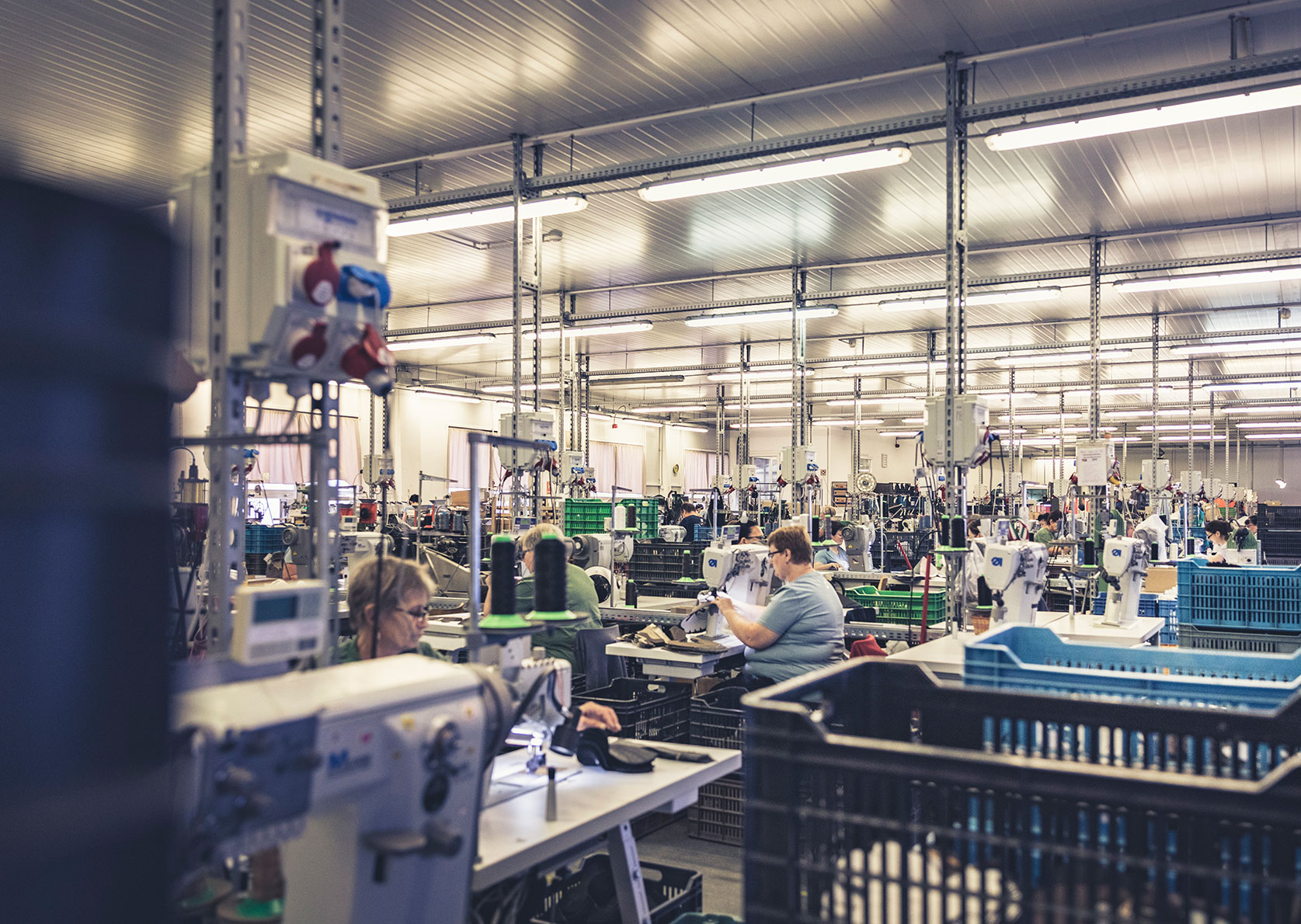
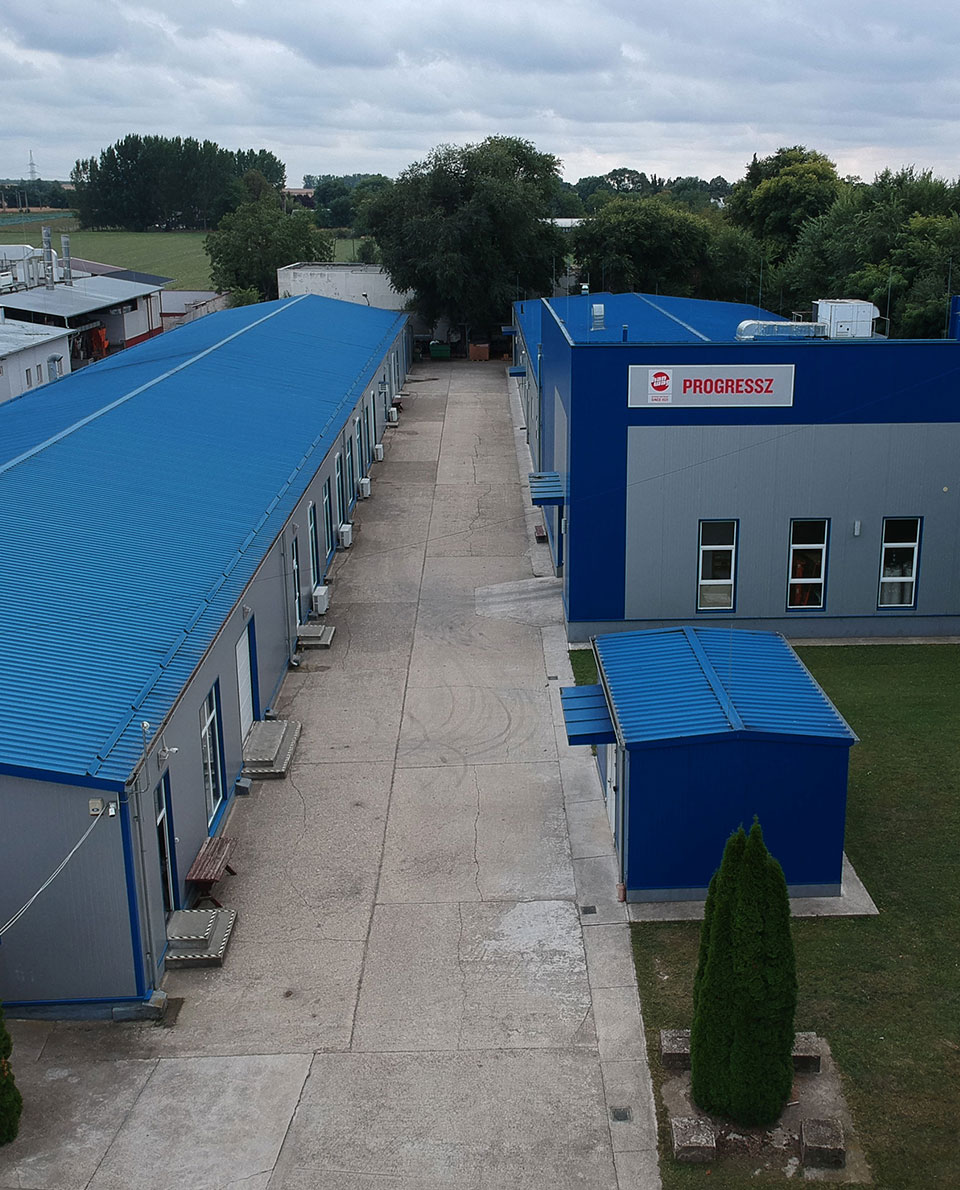
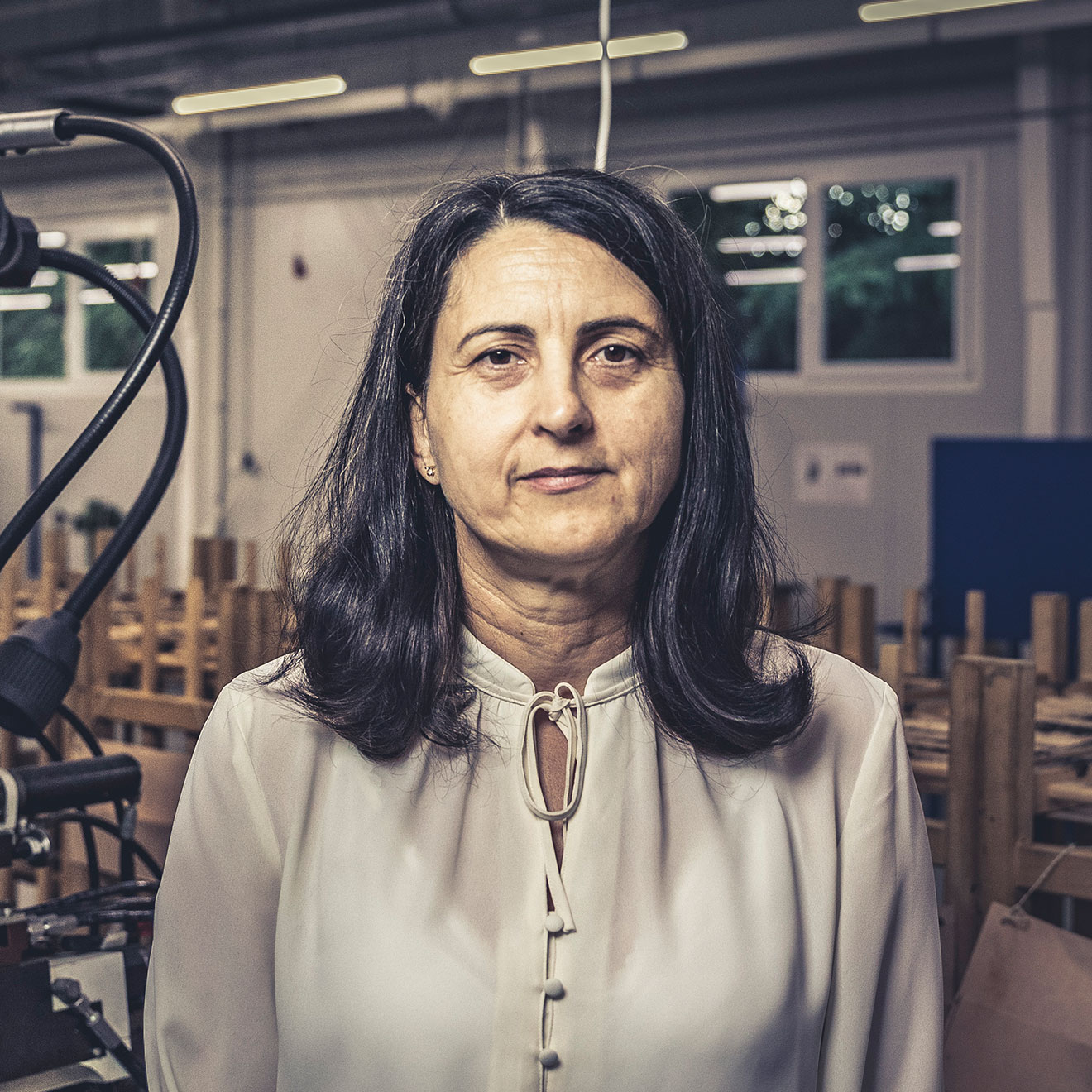
“We primarily stitch uppers here, which are then sent to the other HANWAG factories to have soles glued onto them.”
Anikó Csorbáné Aszalós, factory general manager“A few of the models, like the HANWAG Tatra are made entirely here,” explains Progressz general manager Anikó Csorbáné Aszalós. “But we primarily stitch uppers, which are then sent to the other HANWAG factories to have soles glued onto them.” That includes the uppers of all the double-stitched models, which are then sent to Germany to be assembled at the Reck shoe factory.
The stitching department is alive with the sounds of whirring sewing machines, rumbling punching machines and clunking riveting machines. At various workstations, we notice laminated slips of paper with instructions from Gore. “Every factory that uses Gore-Tex membranes has to be certified by Gore itself,” explains Anikó. It’s how the company ensures it can stick to its promise ‘Guaranteed to keep you dry’. “The female employees like to work with Gore-Tex,” says Anikó. “It’s because it’s a sophisticated material. You have to weld it.” In a newly built factory hall next door, a handful of men mostly, assemble the shoes. Here, they are glued, cemented, sanded and polished.
And what is Anikó particularly proud of? “We are considered a good employer here in the town. People like to work here and mostly end up staying for years.”
4 employees introduce themselves
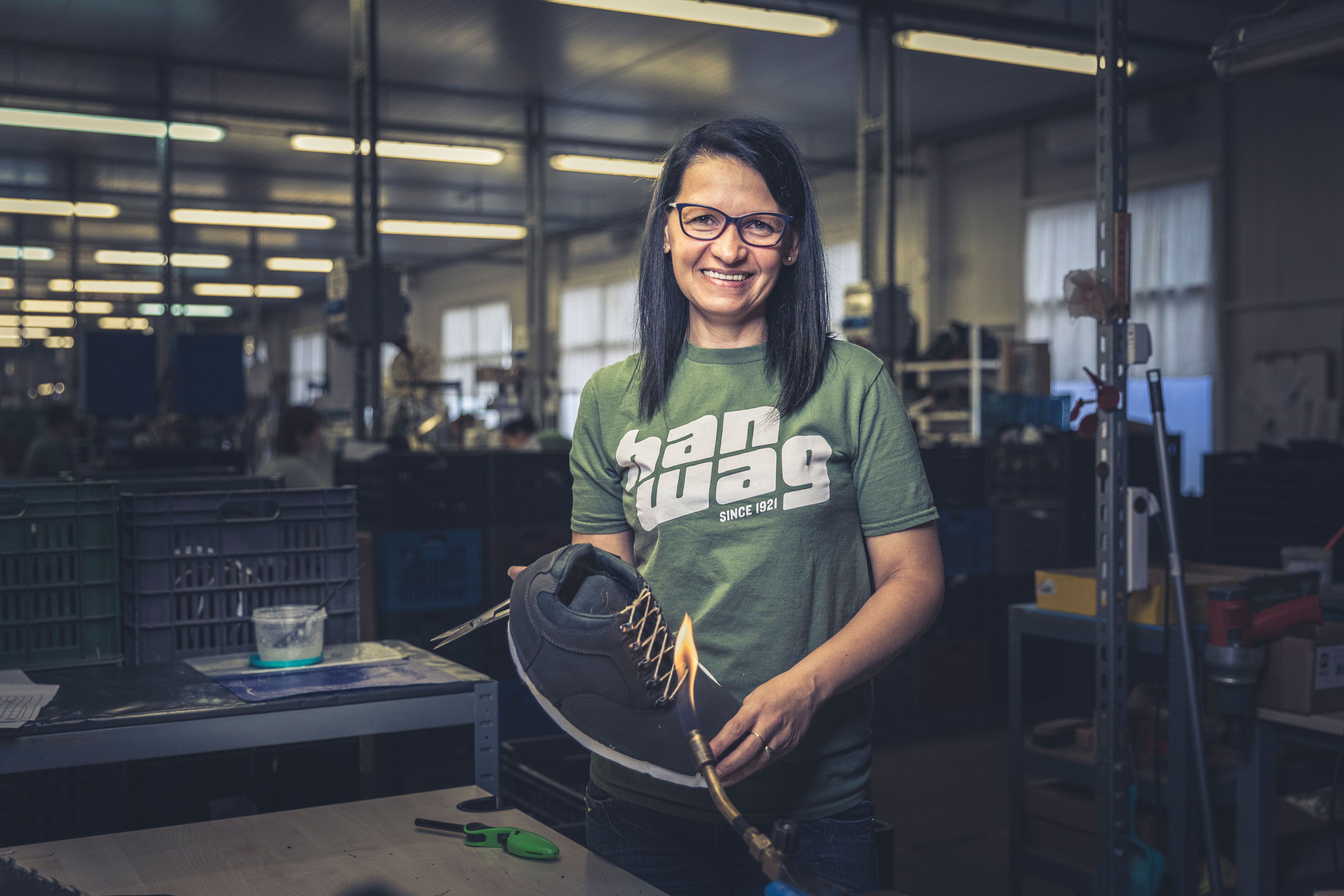
1 Csilla is passionate about quality
Csilla stands next to a flickering gas flame. She is the one who ultimately ensures the high quality of HANWAG shoes. The 43-year-old is in charge of quality control at the Hajdúböszörmény factory. Csilla inspects each and every one of the uppers, for example, before they are sent to the factory in Croatia or to Germany for assembly. “There can be no mistakes in the stitching for instance,” she says. “All the models also have to conform exactly to the designs.” And using a gas burner, she singes off any thread ends that are left sticking out.
Csilla has worked in the Progressz stitching department since 1997, always on HANWAG footwear. It’s this lengthy experience she has that makes her so well placed for her position in quality control. But her love of shoes was something she already had from birth. Her father was also a shoemaker. “He fixed shoes from home, and then later worked here in the factory.”
When she left school, Csilla studied to become a shoemaker. In those days, there were still several footwear factories in Hajdúböszörmény. The course was discontinued about ten years ago. Csilla’s younger colleagues are mostly trained in-house .
“But they’re great at their jobs,” says Csilla. “It’s very rare that I find any mistakes.” She inspects several hundred sets of uppers every day and packs them up to be shipped. Her husband, who also works for Progressz, in the warehouse, takes the parcels from her for shipping.
3 Questions for Csilla
-
What’s the most important aspect of your job?
“In quality control I have to be very attentive. And very punctual too, so that the uppers can be processed in time.”
-
What does HANWAG mean to you?
“Half my family either works here or has worked here in the past. And you can tell that even after 100 years, HANWAG is still developing and progressing.”
-
What would you like to wish HANWAG for the next 100 years?
“Plenty of orders – so that we’ll still be making shoes here 100 years from now.”
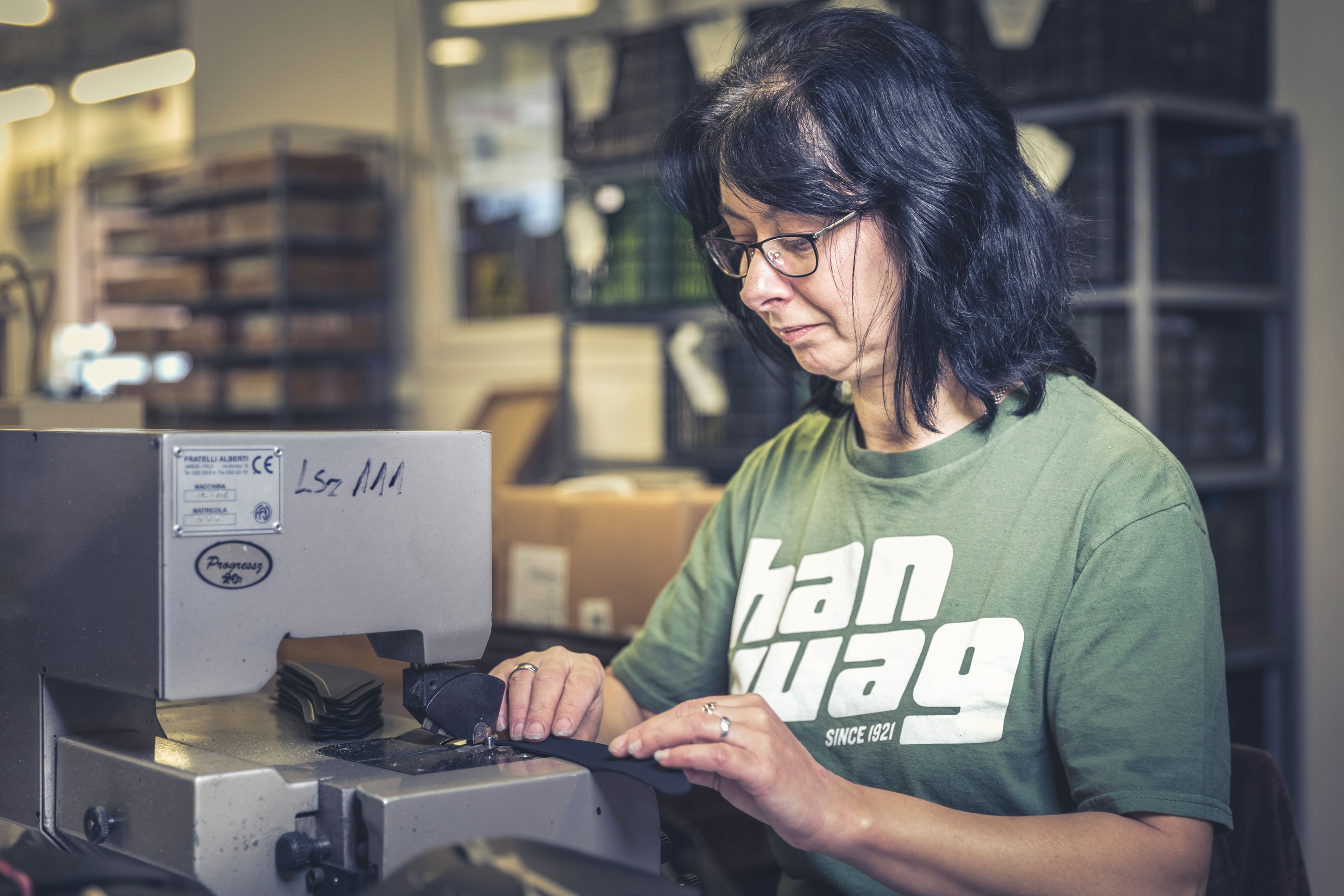
2 Andrea: “It feels like one big family here.”
The rubber strips on Andrea’s workbench are destined to become rubber rands on a pair of trekking boots. They’re designed to protect the leather uppers at the toe and heel from damage from rocks and scree. These pieces of rubber were made into triangular shapes with rounded edges in the punching shop. Now, Andrea has to skive them, reducing their thickness with a sanding machine. It takes Andrea two seconds for each piece. It looks like monotonous work. But Andrea doesn’t mind.
“I work with parts made of different materials for different shoe models,” explains Andrea. So her job in the pre-fabrication department is actually quite varied. The pre-fabrication department is where all the countless little leather, rubber or foam components are prepared before they go to the stitching department or sole department. “These rubber pieces need to be exactly the right thickness at the edges – not too thick, not too thin.”
Andrea has worked in the shoe industry since 1990, and for Progressz since 1993. “It’s great that we make such technical shoes here, because we’re specialists at it,” says the 48-year-old. The factory floor is bustling and often quite loud. But that doesn’t bother Andrea. Quite the opposite: “Most of us have known each other for many years. And working so closely together, it sometimes feels like we’re just one big family.”
3 Questions for Andrea
-
What’s the most important aspect of your job?
“It’s not easy to be consistently accurate when you’re working with so many individual pieces. It takes a lot of concentration and experience.”
-
What does HANWAG mean to you?
“My husband works here too, so the company represents our livelihood and security in these uncertain times.”
-
What would you like to wish HANWAG for the next 100 years?
“I’d like to wish HANWAG all the best – and that they continue to produce such high-quality footwear.”
3 Robert creates the perfect fit
Robert embodies HANWAG’s most important type of shoe construction. Using two impressive machines, he makes shoes using the cemented construction technique. (–> Find out more: How we make our shoes) “This stage of the production determines the fit of the shoe,” explains Robert. “Because inside the uppers, we have the last. And with cemented construction the leather is shaped around that last.” One lasting machine shapes the front of the shoe, and the other is for the back of the shoe.
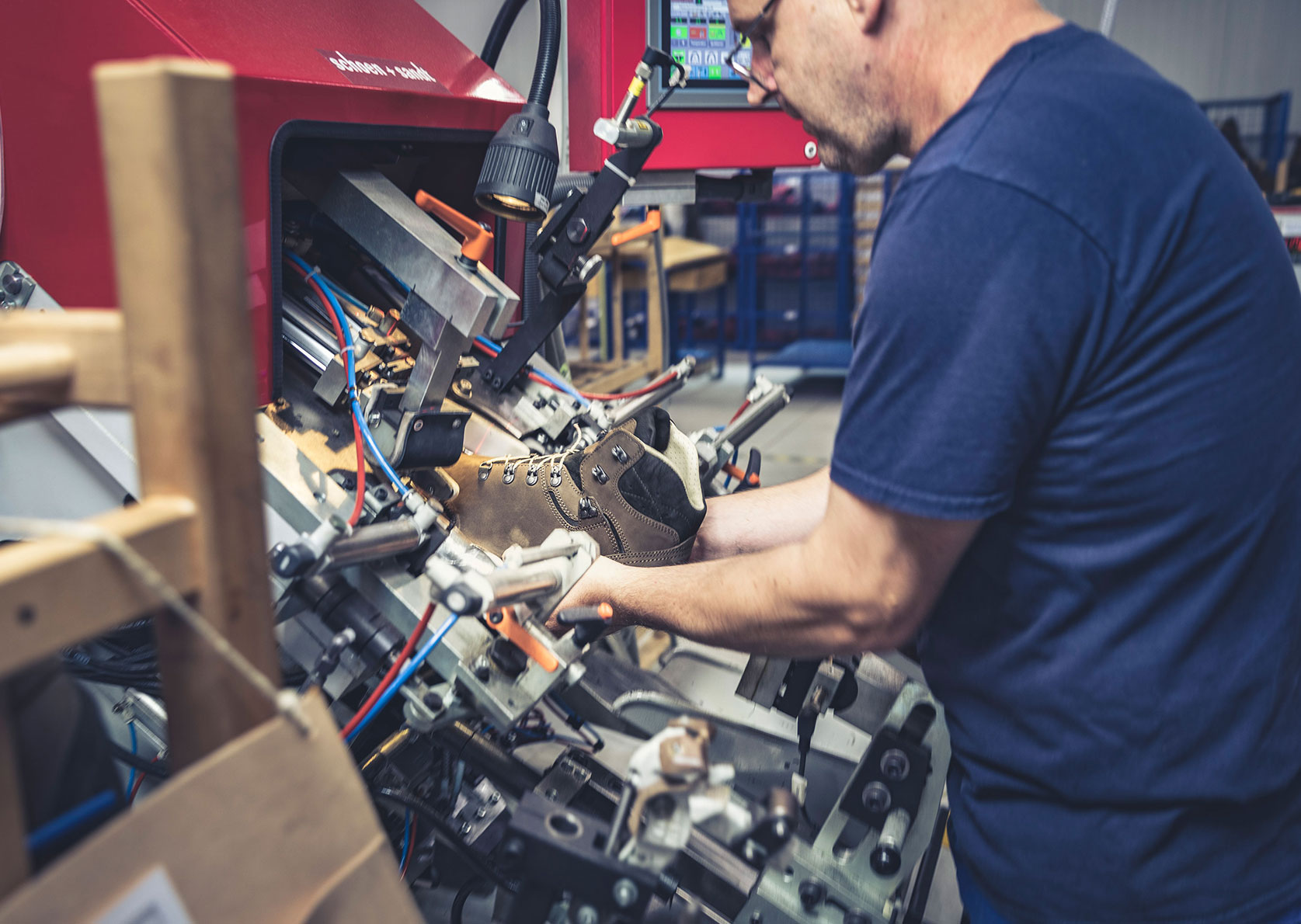
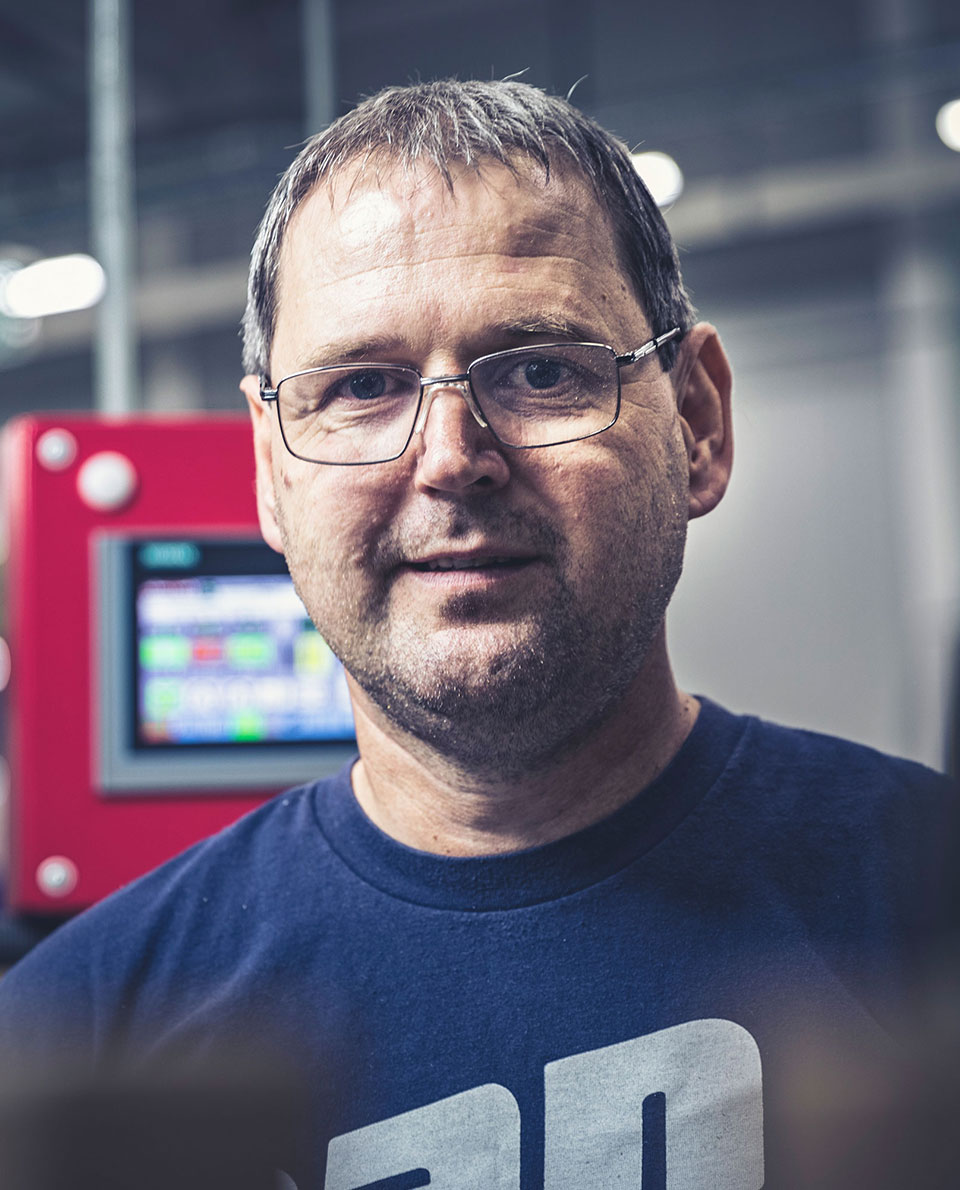
Robert has worked in the footwear industry since 1983. “We went on a school trip once to a shoe factory,” he recalls. “It made such an impression on me that I decided to learn to be a shoemaker.” His first job was making riding boots, which also had cemented construction. Robert has worked at Progressz since 2015, shaping HANWAG footwear, for the best fit. (–> How you can find the perfect fit)
Currently, he’s working with four different types of HANWAG lasts, which give the shoes their special, foot-specific shape: Normal, Wide, Narrow or Bunion. And in a wide range of sizes too.
Find out more: ‘Made in Europe’ – what HANWAG bases its pledge on
“Another advantage of having cemented construction footwear is that they can be resoled,” explains the 52-year-old. “Which means you can keep your favourite, well-worn-in footwear for many, many years.”
Robert lasts around 125 pairs a day. Then there are some that he glues the outsole onto as well. His whole working life, he’s worked with high-quality shoes. “And were it up to me, I’d happily keep it that way until retirement.”
3 Questions for Robert
-
What’s the most important aspect of your job?
“Apart from strength and an eye for quality, my job also requires technical expertise. I have to adjust the lasting machine each time I use a different type of last.”
-
What does HANWAG mean to you?
“It stands for the highest quality and excellence in footwear.”
-
What would you like to wish HANWAG for the next 100 years?
“Another 100 years of success!”
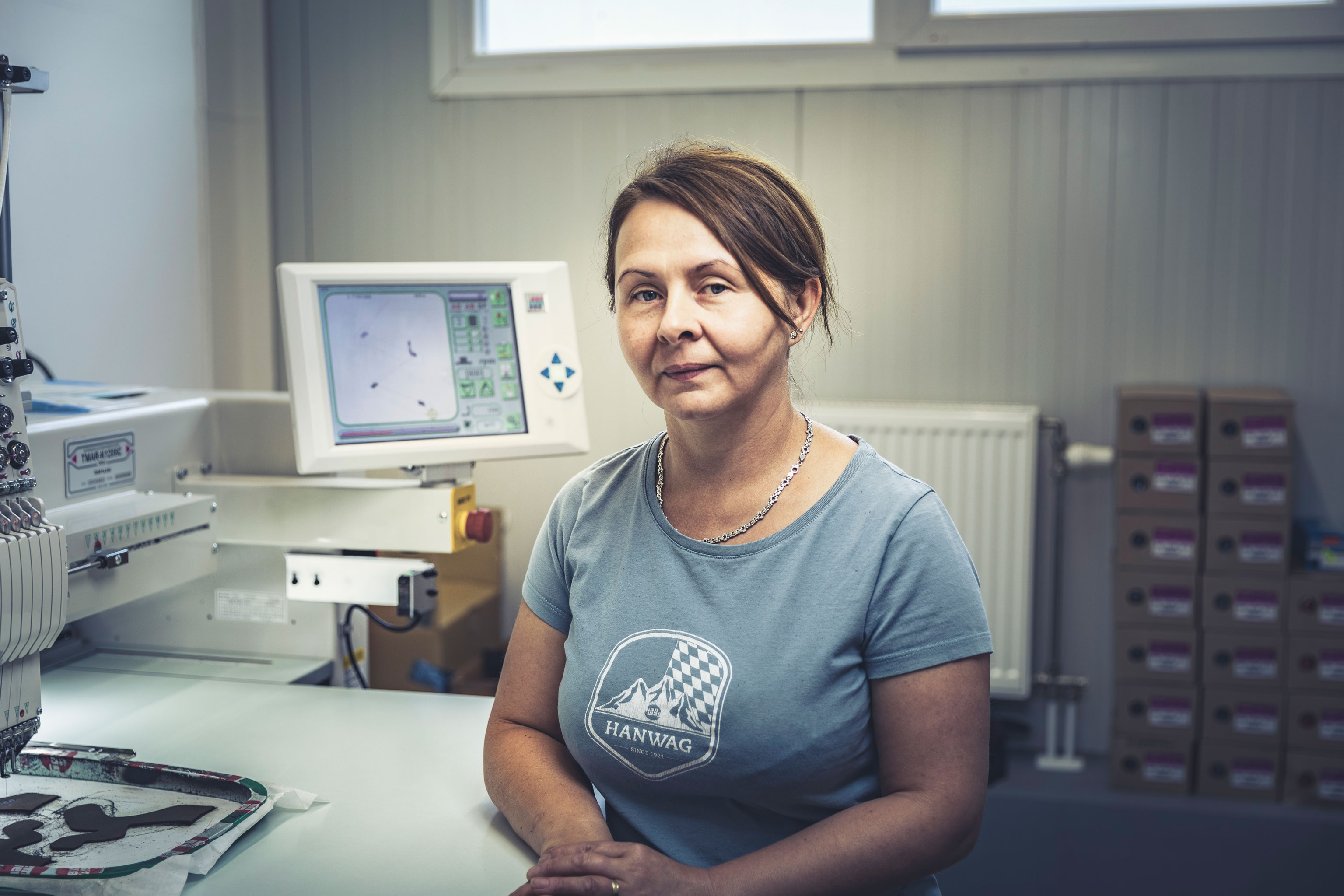
4 Timea: “I can develop my skills here”
In contrast to some of the more old-fashioned sewing machines and gigantic lasting machines in the place, Timea’s machine looks like the height of technology. She controls the embroidery machine via a screen. One click, and the five machine heads start embroidering the HANWAG logo onto pieces of leather that she’s positioned on a kind of tray with millimetre precision.
“Sure, the machine is technical, it’s quite a challenge to operate,” says Timea. “But I manage it well and can fix most little glitches myself.” Timea started out in 1999 in stitching. “At the time, my mother actually accompanied me, because she wanted to get a job here. When the boss heard that I had previously worked in the textile industry, he asked if I wanted to try out the zigzag machine. After two days on probation, I got the job. My mother didn’t, unfortunately.”
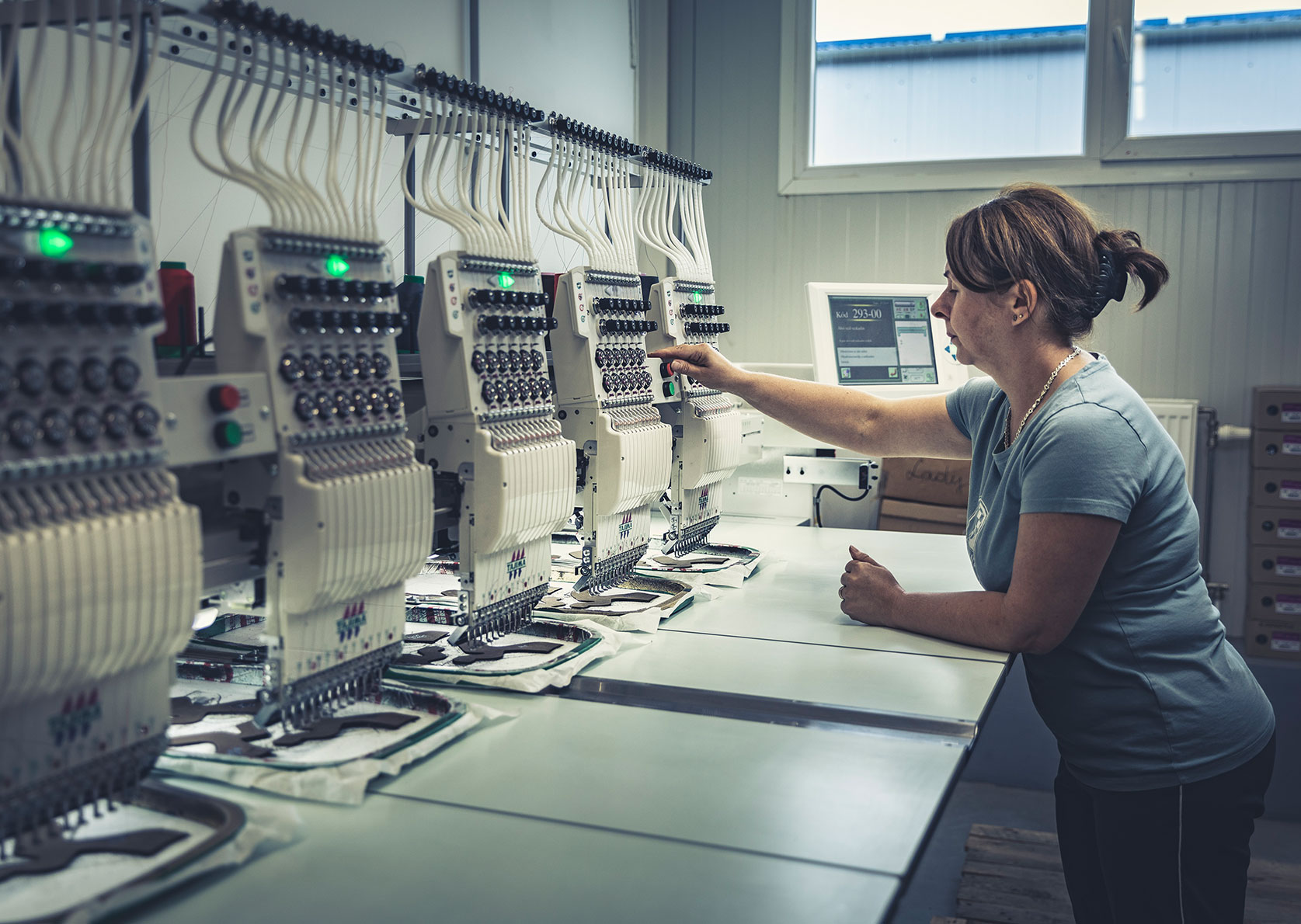
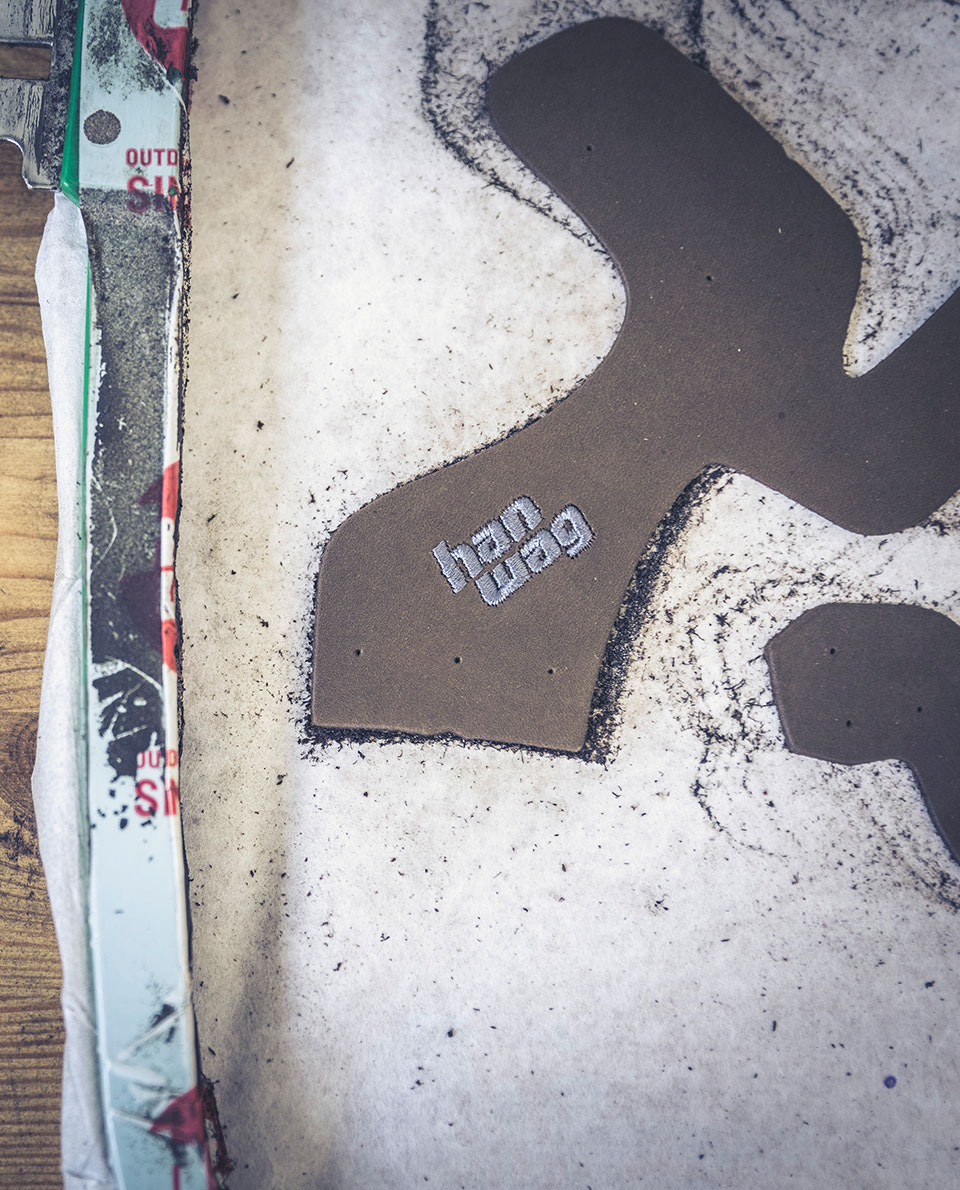
Timea progressed from sewing machine to the welding machine for Gore-Tex linings and right the way up to embroidery. “I like the fact that I can develop my skills here,” says the 43-year-old. But no matter how much she enjoys the benefits of technology, she still loves the feel of leather. “It’s a wonderful material. I like handling it. Especially when it’s so beautifully finished, like it is here on these HANWAG shoes.”
3 Questions for Timea
-
What’s the most important aspect of your job?
“I have to be precise and make sure my work is of the highest quality. And generate as few repairs as possible.”
-
What does HANWAG mean to you?
“It’s been my workplace for 21 years now.”
-
What would you like to wish HANWAG for the next 100 years?
“I wish HANWAG many high-quality shoes and plenty of orders.”
Next stop on the ‘Made in Europe’ road trip: the double-stitching site in Swabia
